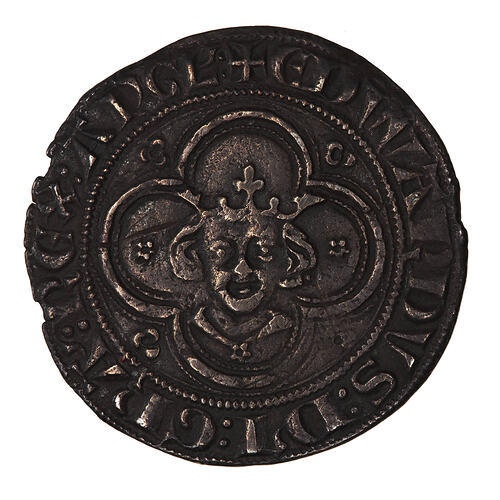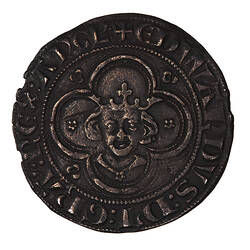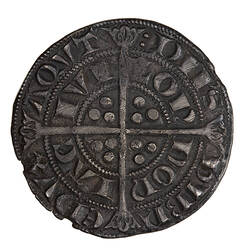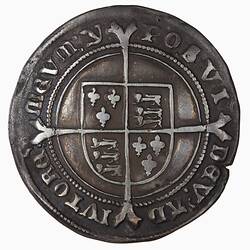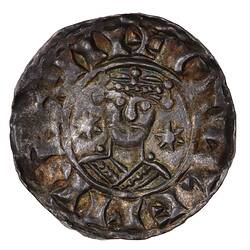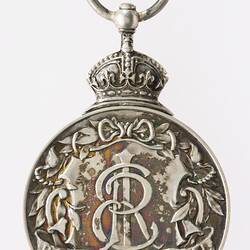Summary
Silver coin; Denomination Groat
London Mint
Edward I (1272 - 1307)
The reign of Edward I saw the abandonment of much of the Anglo-Saxon traditions of coinage when the king embarked on a re-coinage from 1279. Moneyer's name were, with one minor exception, dropped though mint names, preceeded by civitas or villa were retained. The Anglo-Saxon method of creating halfpence and farthings by cutting a penny into half or quarters was replaced by the striking of round silver coins. Unless additional mint were needed for exceptional large production of coins, it became the practice to have only four or five permanent mint in operation. This, an experimental fourpence coin called a groat (from the French Gros) was also introduced - though not successfully. It was not until the fourth coinage of Edward III from 1351 that this denomination became a regular issue.
Obverse Description
A crowned bust of the King facing within a quatrefoil of three lines, flowers in the spandrels. The king's drapery is indicated by two wedges meeting at a rosette; around, + EDWARDVS DI GRA REX ANGL
Reverse Description
A long cross with three beads in the angles; around in an outer line the continuation of the King's titles, DNS HIBN EDVX AQVT, around within, the mint name, LON DON IAC IVI
Edge Description
Plain
More Information
-
Collecting Areas
-
Acquisition Information
Transfer from National Gallery of Victoria (NGV), Spink & Son Ltd., 15 Mar 1976
-
Acknowledgement
Purchased, Felton Bequest, 1932
-
Date Issued
circa 1279 AD
-
Issued By
-
Mint
Royal Mint, London, London, England, Great Britain, circa 1279
-
Denomination
-
Series
-
Material
Silver
-
Axis
10
-
Classification
-
Category
-
Discipline
-
Type of item
-
Overall Dimensions
28 mm (Outside Diameter), 5.366 g (Weight)
-
Shape
Round
-
References
[Book] North, J. J. 1963. English Hammered Coinage., p.14, no.1007 Pages
[Book] Skingley, Philip. 2007. Coins of England and the United Kingdom., p.160, no.1379 Pages
